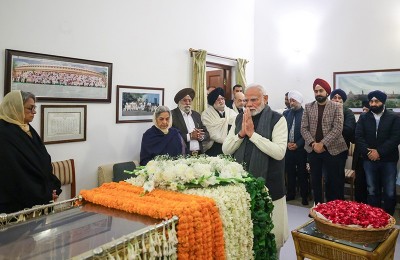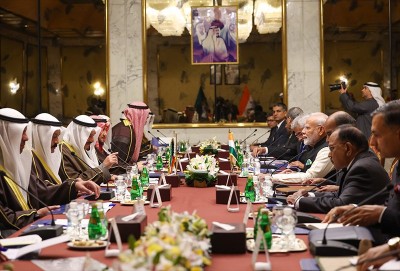 Assam
Assam
Assam: Sticky Negotiations
On February 23, 2021, a total of 1,040 militants surrendered before Assam Chief Minister (CM) Sarbananda Sonowal. Prominent among these were the ‘chairman’ of the People's Democratic Council of Karbi Longri (PDCK), Ingti Kathar Songbijit; ‘chairman’ of the Karbi Longri NC Hills Liberation Front (KLNLF), P. Dilli; and ‘commander-in-chief’ of the Donri Kramsa-led faction of Karbi People's Liberation Tiger (KPLT), S. J. Ejang.
The surrendered militants belonged to the PDCK, KLNLF, both factions of the KPLT – one led by Donri Kramsa and another led by Ron Rongpi – the United Peoples Liberation Army (UPLA) and the Kuki Liberation Front (KLF). All these groups are based in the Karbi Anglong District, one of the worst insurgency-affected districts of the State. Out of the 33 Districts of the State that have recorded insurgency-linked fatalities between March 6, 2000, and February 25, 2021, the Karbi Anglong District recorded the maximum of 762 fatalities.
The surrendered militants also deposited 338 arms, including 58 AK series rifles, 11 M-16 guns and four Light Machine Guns (LMGs).
However, a peace agreement with these groups that was expected to be signed in the presence of Union Home Minister Amit Shah on February 25 has failed to materialise. KPLT-Donri Kramsa faction 'foreign secretary' John Tandon Bey aka Rex Ting-eh stated,
For maintaining peace, we laid down arms on February 23 at Guwahati. But we were not satisfied with the draft presented to us for the peace accord as there was no mention of the Autonomous State issue, which is the longstanding demand of the people of Karbi Anglong and Dima Hasao.
He further added,
For the signing of any accord, sufficient time should be given to study what is inside the draft. But the draft was given to us on the day we surrendered arms. We did not get time to study the draft.
On the other hand, KPLT-Ron Rongpi 'chairman' Ron Rongpi observed,
We were supposed to sign an accord on February 25. But that could not happen. It's not a big deal. There was no failure of talks. There were certain technical problems and we had to change the date.
Meanwhile, commenting on the surrender and its significance, Additional Director General of Police (ADGP-Law and Order) of Assam, G.P. Singh, noted,
It's a very significant development, not only for Karbi Anglong or Assam but also for Nagaland. It means that all insurgent outfits of Karbi Anglong District have now been brought into the mainstream… With this surrender a huge number of weapons have come over ground - and that is a major step towards peace in the State… Karbi Anglong militant outfits joining the mainstream means a decline in influence of Naga militant outfits in Assam.
The National Socialist Council of Nagaland-Isak Muivah (NSCN-IM) has long been promoting proxy groups in the Hill Districts of Assam, mainly the Karbi Anglong District. For instance, NSCN-IM militants Phungting Shimrang (the former 'commander-in-chief' of the Naga army) and 'Brigadier' Chiphemi Shimrang have been involved in promoting Dimasa National Liberation Army (DNLA).
It is pertinent to recall here that in January 2020, at least 2,259 militants had surrendered in the State.
On January 23, 644 militants from eight groups laid down arms at a surrender ceremony which was conducted at Guwahati in the Kamrup Metropolitan District of Assam. Of the surrendered militants, 301 belonged to National Liberation Front of Bengalis (NLFB), 178 to the Adivasi Dragon Force (ADF), 87 to the National Santhal Liberation Army (NSLA), 50 to the United Liberation Front of Asom-Independent (ULFA-I), 13 to the Rabha National Liberation Front (RNLF), eight to the National Democratic Front of Bodoland (NDFB), six to the Kamtapur Liberation Organisation (KLO) and one Communist Party of India-Maoist (CPI-Maoist) cadres. 177 weapons were also surrendered.
On January 30, 1,615 militants surrendered at Guwahati. The surrendered militants belonged to four different factions of the NDFB: NDFB-Dhiren Bodo, NDFB Gobinda Basumatary, NDFB-Ranjan Daimary and NDFB-B. Saoraigwra. The militants deposited 178 weapons, 4,803 live rounds of ammunition and 14 grenades.
On November 11, 2020, the Security Forces (SFs) secured the surrender of the ‘deputy commander-in-chief’ of ULFA-I, Drishti Rajkhowa aka Monoj Rabha, along with four of his accomplices at Rongra in the South Garo Hills District of Meghalaya. On December 21, 2020, a ceremonial surrender took place where 63 militants, including Drishti Rajkhowa, laid down arms at Srimanta Sankardeva Kalakhetra Auditorium in Guwahati in the presence of Assam Chief Minister Sonowal. The surrendering militant belonged to four outfits, ULFA-I, PDCK, DNLA and United People’s Revolutionary Front (UPRF).
Recent measures to bring ethnic militants back into the mainstream appear to be an effort to prevent these groupings from exploiting the fault lines that have re-emerged in the multi-ethnic State following the polarising discourse on illegal migration in the aftermath of the Citizenship Amendment Bill/ Citizenship Amendment Act (CAB/CAA) and the updating exercise of the National Register of Citizens (NRC), which had engulfed the State between 2016 and 2020. During this phase there was a rising perception amongst the indigenous communities of the State that their political status and interests would diminish once illegal entrants were given legitimacy.
Several other militant groups, once active in the State, are currently under Suspension of Operation (SoO) agreements. These include the Hmar People’s Council-Democratic (HPC-D), Adivasi Cobra Military of Assam (ACMA), Birsa Commando Force (BCF), Kuki Revolutionary Army (KRA), United Kukigam Defence Army (UKDA), Kuki Liberation Organization/ Kuki Liberation Army (KLA), Adivasi People’s Army (APA), All Adivasi National Liberation Army (AANLA) and Santhal Tiger Force (STF).
Not surprisingly, according to partial data compiled by the South Asia Terrorism Portal (SATP), violence from armed insurrections remained low. Through 2020, the State accounted for a total of eight fatalities (three civilians and five militants). In 2019, there were three fatalities (one civilian and two militants). The State had recorded a high of 783 fatalities (531 civilians, 72 Security Force, SF, personnel and 180 militants) in 1998.
In the current year, two fatalities have been recorded thus far (data till February 28, 2021). On January 27, suspected Dimasa National Liberation Army militants opened fire and killed two civilians in the Dhansiri area in Karbi Anglong District. The deceased include a former militant leader Amit Nunisa and Alta Maibongsa. One person was also injured in the incident.
As of now, the only major active ethnic militant group in the State is ULFA-I. However, the group’s presence is limited to the easternmost Districts of the State that lie along Assam’s interstate boundary with Arunachal Pradesh and Nagaland.
However, there are grounds of concern with the reported expansion of Bangladeshi Islamist terrorist groups – the Neo Jammat-ul-Mujahideen Bangladesh (Neo-JMB) in Assam. A December 25, 2020, report stated that Neo-JMB was increasing its presence on the northern banks of the Brahmaputra Valley, especially the Char areas inhibited by migrant Muslims. DGP Bhaskar Jyoti Mahanta disclosed that “the ingress of Neo-JMB in Assam is a fact. We are getting ready to counter the menace.”
There is indeed a danger that these remaining terrorist groupings could take advantage of several existing contentious issues.
The clarity over the vexed foreigner issue that was expected from the Supreme Court monitored updating of the NRC exercise has failed to emerge. The final list left out 1.9 million applicants and the outcome pleased none of the stakeholders. Further, the COVID-19 pandemic put both the framing of CAA rules and the roll-out of the nationwide NRC in limbo.
Moreover, a plethora of steps, including the assurance of the implementation of Clause 6 of the 1985 Assam Accord, which had been announced to cool down local tempers after the enactment of CAA, have, in fact, created more problems. On July 15, 2019, the Union Ministry of Home Affairs (UMHA) formed a 13-member committee headed by retired High Court judge Biplab Kumar Sarma and asked it to give recommendations on how to implement Clause 6 of the Accord. The Committee submitted its report on February 25, 2020, and recommended, among other things, the definition of Assamese people based on a cut-off date (January 1, 1951), 80-100 percent reservation in Parliament seats, 80-100 percent reservation for Group C and D jobs for Assamese people, and land rights for Assamese people with restrictions on transfer of land to others. The State Government has now declared that the recommendation by the Committee cannot be implemented. On February 17, 2021, State Finance Minister Himanta Biswa Sarma, declared,
The recommendations given by the Committee are far from the legal reality of this land... How can we implement them?
Clause 6 of the Assam Accord promises, “Constitutional, legislative and administrative safeguards, as may be appropriate, shall be provided to protect, preserve and promote the cultural, social, linguistic identity and heritage of the Assamese people.”
Meanwhile, on December 12, 2020, the All Assam Student’s Union (AASU) revived its anti-CAA movement that had been grounded following security measures and assurances given by the Government and due to COVID-19 related restrictions. The assurances included the extension of Scheduled Tribe (ST) status to six ethnic groups, namely, the Moran, Muttock, Adivasi, Chutia, Tai-Ahom and Koch-Rajbongshi, and have also not been fulfilled. Adivasi militants have constantly reiterated their demand for ST status. Now that these promises have failed to be redeemed the renewal of the agitation in the State cannot be ruled out.
The increased number of militants surrendering makes it imperative for the security establishment to strictly monitor them. Worryingly, several surrendered NDFB militants have reportedly gone missing. On February 20, 2021, DGP Bhaskar Jyoti Mahanta revealed that several ‘elements’ including NDFB-B. Saoraigwra leader M. Batha, might have returned to the jungles to mount another insurrection. DGP Mahanta further noted, “Not only Batha… there are several others who are mulling a return to the jungles, we have been informed. I cannot divulge all the information at this present moment.”
Earlier, on October 6, 2020, all four NDFB factions – Dhiren Bodo, Gobinda Basumatary, Ranjan Daimary and B. Saoraigwra – that had surrendered on January 30, 2020, demanded omission of the phrase 'comprehensive and final' and 'exclusion of villages from Bodoland Territorial Council', from the agreement, as well as general amnesty for all members of NDFB without the distinction of heinous and non-heinous crime category and inclusion of NDFB members in the constituted Commission for inclusion/ exclusion of villages within Bodo Territorial Region (BTR). There is also the demand of giving ST status to Bodos living in Karbi Anglong District. In such a situation the BTR transition becomes really tricky.
Separately, the inter-state border disputes between Assam and Mizoram have resulted in several instances of violence in 2020. Tension still prevails with the latest clash reported from Kachurtal in the Hailakandi District of Assam, which left six persons (three from each of the two State) injured on February 9, 2021.
The future of insurgent movements and the consolidation of peace in Assam will depend on how well the political establishment balances several competing ethnic and linguistic interests. Peacefully resolving inter State boundary dispute and the continued support from Myanmar and Bangladesh are also crucial.
Support Our Journalism
We cannot do without you.. your contribution supports unbiased journalism
IBNS is not driven by any ism- not wokeism, not racism, not skewed secularism, not hyper right-wing or left liberal ideals, nor by any hardline religious beliefs or hyper nationalism. We want to serve you good old objective news, as they are. We do not judge or preach. We let people decide for themselves. We only try to present factual and well-sourced news.







